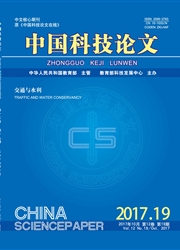

 中文摘要:
中文摘要:
为提高轨道交通客流转移预测精度,以乌鲁木齐市居民出行方式选择行为的SP调查(stated preference survey)数据为基础建立Nested Logit模型,考虑交通信息及居民出行方式选择习惯等因素,对城市轨道交通客流转移进行实证研究。研究结果表明,考虑各交通方式之间相关性的Nested Logit模型可以有效地预测新增轨道交通后各出行方式的出行分担比例;交通信息准确度和出行者通常选择的出行方式显著影响着居民的出行方式选择,一定程度上反映了交通信息及居民出行方式选择习惯对轨道交通客流转移的影响;轨道交通1号线和2号线建成后,预测可承担居民34.7%的出行。通常选择出租车出行的居民倾向于向轨道交通转移,常规公交和出租车的出行比例大幅减少,而私家车出行比例减少幅度最小。该研究为轨道交通的建设和运营管理、常规公交线路调整以及交通结构优化提供了有效的理论依据。
 英文摘要:
英文摘要:
In order to improve the forecasting accuracy of the shift in passenger traffic during rail transit, an empirical study on rail transit passenger transformation was carried out by constructing a Nested Logit model. The study was based on the stated preference survey of residents’ mode choice behavior in Urumqi and the traffic information and the residents’ travel mode choice habits were taken into account. The results showed that Nested Logit model with the consideration of the correlation between traffic modes can effectively predict the share of traffic modes after the rail transit was introduced. The traffic information accura-cy and travelers? day to day traffic mode usually have significant effect on residents? mode choice, which reflects the impact of the traffic information and the residents? travel mode choice habits on rail transit passenger transformation to some extent . It was predicted that, the rail transit will share 34. 7% of residents? trip in Urumqi when metro line 1 and line 2 are fully operated. Those residents who usually choose taxi have a tendency to shift toward rail transit. The percentage of bus and taxi will reduce dramatically, while the usage of private car will decrease the minimal extent. This study has provided an effective theory for the construction and operation management of rail transit, the regular bus routes adjustment and the traffic structure optimization
 同期刊论文项目
同期刊论文项目
 同项目期刊论文
同项目期刊论文
 期刊信息
期刊信息
